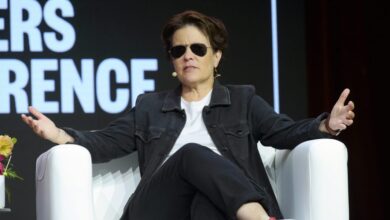The Sandbox and Decentraland caught in SEC’s crosshairs

The emergence of Web3 and the concept of metaverses have taken the digital world by storm. Two prominent pioneers in this space, The Sandbox and Decentraland, made headlines in 2021 during the digital land rush. However, recent developments, including lawsuits by the U.S. Securities and Exchange Commission (SEC), have presented new challenges for these platforms. In this article, we will explore the rise of The Sandbox and Decentraland, their subsequent setbacks, and the current state of Web3 gaming.
The Land Rush and Soaring Cryptocurrencies: In 2021, speculators were willing to pay exorbitant amounts for plots of land in The Sandbox and Decentraland. Notable purchases included Republic Realm (now Everyrealm) acquiring a plot in The Sandbox for $4.3 million and Tokens.com’s $2 million buying spree in Decentraland. Concurrently, the respective cryptocurrencies of these platforms, SAND and MANA, experienced tremendous growth. In November 2021, SAND reached a high of $8.44, while MANA reached $5.90. However, their values have since plummeted by more than 90%.
SEC Lawsuits and their Implications:
The recent lawsuits filed by the SEC against Binance and Coinbase have labeled both SAND and MANA tokens as securities. This development casts a shadow over the future of these platforms. Sébastien Borget, the chief operating officer of The Sandbox, appears unfazed by the designation, stating that it does not impact the company’s day-to-day operations. On the other hand, Decentraland has yet to release an official statement regarding the SEC’s claims.
Potential Setbacks and Delisting Concerns:
Although the lawsuits may take years to resolve, the SEC’s allegations already pose challenges for the Web3 space, which has been experiencing a slowdown in momentum. Robinhood’s decision to cease support for certain cryptocurrencies, including Cardano, Polygon, and Solana, reflects the growing uncertainties. Given that SAND and MANA are vital to the in-game economies of their respective platforms, the possibility of being delisted from exchanges could further complicate the business of virtual worlds.
Web3 Gaming Endurance:
Despite the overall decrease in on-chain transactions and a temporary dip in the NFT market’s monthly trading volume, Web3 gaming remains resilient. According to DappRadar, on-chain gaming activity witnessed a 6% increase in May and accounted for 36% of all activity. This data indicates that Web3 gaming continues to hold its ground, maintaining a significant presence within the larger blockchain ecosystem.
Recent Developments in the NFT Space:
In other news related to the NFT market, cryptocurrency exchange Kraken has launched its NFT marketplace after an extensive beta testing phase. The platform stands out by not charging gas fees for buying or selling NFTs and has expanded its offerings to include 250 collections. Luxury brand Louis Vuitton has also joined the NFT space, releasing its first NFT trunk collection, called “Via Treasure Trunks,” which offers access to exclusive products and events throughout the year. Additionally, sportswear company Puma plans to collaborate with NBA player LaMelo Ball and the NFT project Gutter Cat Gang, introducing digital sneakers known as GutterMelo MB.03, which can be redeemed for a physical version.
Conclusion:
The Sandbox and Decentraland played significant roles in shaping the Web3 landscape, with their digital land sales and surging cryptocurrencies capturing the attention of both investors and enthusiasts. However, the recent SEC lawsuits have introduced uncertainties for these platforms and the broader Web3 space. Nonetheless, Web3 gaming persists, displaying resilience and continued growth within the blockchain industry. As the metaverse concept evolves and new opportunities arise, it remains to be seen how these pioneering platforms will navigate the challenges and emerge in the ever-changing landscape of Web3.



